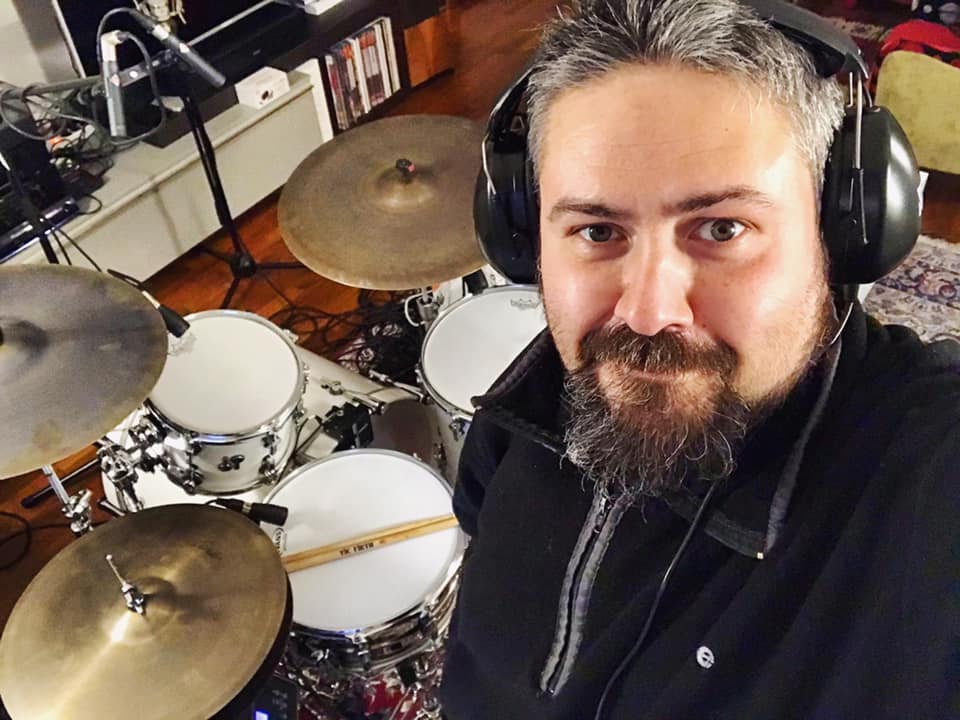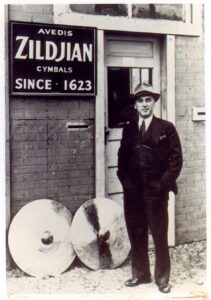New Avedis Zildjian – Great Sound And Response

hello everyone, i bought almost 2 years ago a 20″ ride of this new “old fashioned” line of Cymbals named AVEDIS ZILDJIAN and i really loved the sound and particular response…
so i decided to expand the set adding a 18″ crash and 15″ hi-hat…
obviously you have to consider a lot of things in the valutation of these cymbals such as the genre of music you play, your second nature on the instrument, and the idea of sound you would love to obtain related to the dynamics in wich you play…
so, i have to say that these cymbals, like everything has his own personality, have a sound you may love or hate, and it would also depend on wich kind of context you are operating in…
of course, the sound is very similar to the vintage cymbals wich made history and wich can be listened to, on a lot of the albums who made history, but in a modern context, that kind of sound can become something completely new…
A LITTLE BIT OF HISTORY
The Avedis Zildjian Company, simply known as Zildjian (/ˈzɪldʒən, –dʒiən/),[2] is an Armenian-American musical instrument manufacturer and the largest cymbal and drumstick maker in the world. The company was founded in Constantinople (present-day Istanbul, Turkey) by Avedis Zildjian in 1623, and is now based in Norwell, Massachusetts. Zildjian is one of the oldest manufacturers of musical instruments in the world. Zildjian sells cymbals, drumsticks, percussion mallets and other drum accessories under the Zildjian, Vic Firth and Balter Mallet brands.

Avedis Zildjian III in front of the Zildjian Quincy Factory; (right): gravestone of Puzant and Arpine Zildjian, Mount Auburn Cemetery, Watertown, Massachusetts
The first Zildjian cymbals were created in 1618 by Avedis Zildjian, an Armenian metalsmith and alchemist.[9] Like his father, who was also a metalsmith, he worked for the court of the Sultan of the Ottoman Empire in Constantinople.[10] He made an alloy of tin, copper, and silver into a sheet of metal, which could make musical sounds without shattering.[11] According to the company’s website, the Sultan Osman II the Young gave Avedis the name Zildjian, meaning “cymbal smith” in Armenian, with zil being Turkish for “cymbal,” ci meaning “maker”, and ian being the Armenian suffix meaning “son of”.[12] In 1623 the Sultan granted him permission to leave the palace to start his own business in a suburb of Constantinople named Psamatia.[12][13]
Zildjian’s shop manufactured cymbals for the mehter, Ottoman military bands consisting of wind and percussion instruments, which belonged to the Janissaries. Mehter ensembles, which were known in the West primarily for playing in battle, also performed courtly music for Ottoman rulers.[9][14][15] The Zildjians likely also produced instruments for Greek and Armenian churches, Sufi dervishes, and belly dancers of the Ottoman harem, who wore finger cymbals.[9]
After the death of Avedis, the business, and the secret for producing the metal, was handed down to several generations of male heirs. In the early 19th century, Haroutune Zildjian passed it on to his son Avedis II.[10] In 1850, Avedis II built a 25-foot schooner, in order to sail cymbals produced in Constantinople to trade exhibitions such as the Great Exhibition in London,[9] and to supply musicians in Europe.[16][17] He died in 1865, and since his sons were too young, his brother Kerope II took over the company.[18] He introduced a line of instruments called K Zildjian, which are used by classical musicians to this day.[9][19] Kerope II died in 1909 in Constantinople.
Using the every secret alloy blend, Zildjian describe these cymbals as ‘a vintage recreation of the timeless sound and feel heard and played on thousands of top hits from the 30’s through the 60’s, from swing to bebop to the explosion of rock & roll’. This sums up the brief perfectly because as mentioned, the Vintage sound is so in at the moment but for a lot of players, the K and Kerope cymbals may be a little too dark so the Avedis range aims to fill the gap, offering vintage, but the other spectrum. The range is rather simplistic in a lot of ways. There are three hi-hat sizes to choose from – 14”, 15” and 16” and all other cymbals are simply referred to as crash/rides available in sizes from 18” – 22” of which, this naming convention is very correctly matched to their nature. (FROM WIKIPEDIA)
SOUND, RESPONSE and CONCEPT
I’d like to start from the concept sayn that these cymbals are probably made following way of the very old times but using the modern machinery and materials, a kind of return to the origins of the prestigious Zildjian brand;
i found awsome the result of this experiment as these cymbals sound very good in my opinion; the sound is generally very warm and soft, the ride has a very wide spectre sound with an awsome bell sound, the ping and attack is not the point of force of these cymbals but the offer a lot of sustain and the response is high level also with a light dynamic playing and every size of the set can be used as ride/crash depending by the dynamics you are using…
By the way, i found also the confortable aspect of using these cymbals, great for what i call “on the run” gig context as i could play with just one cymbal used as ride and crash with great response.
I really Hope the article could help you out to have an idea about these cymbals,
if you have any comment or question about it,
feel free to post it in the comments below!
SOME DEALS
ZILDJIAN AVEDIS 18 CRASH
ZILDJIAN 16″ A AVEDIS HI-HAT (CM. 40)
ZILDJIAN AVEDIS 20″ Ride
